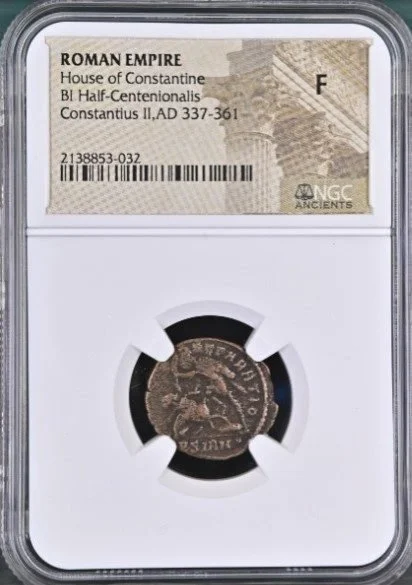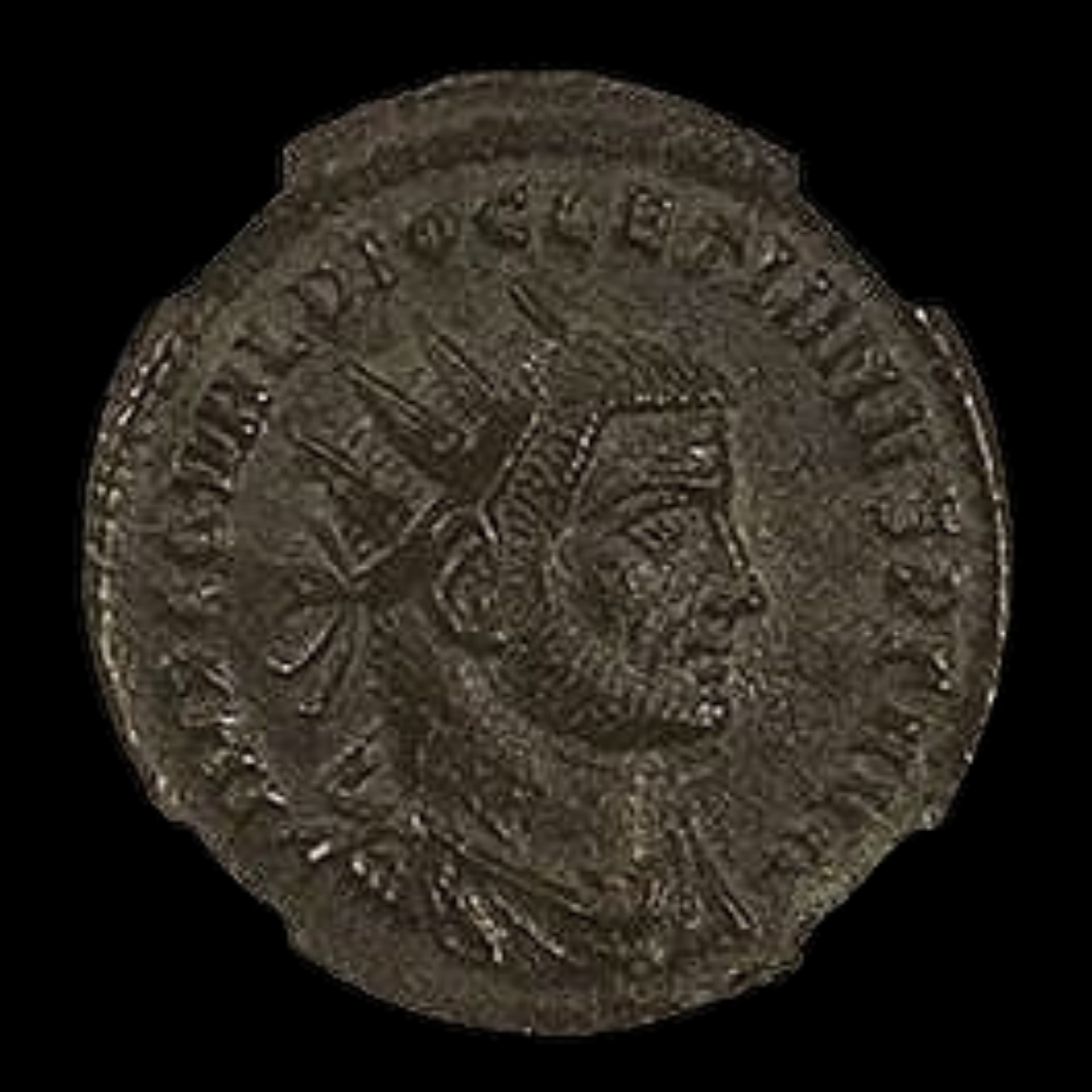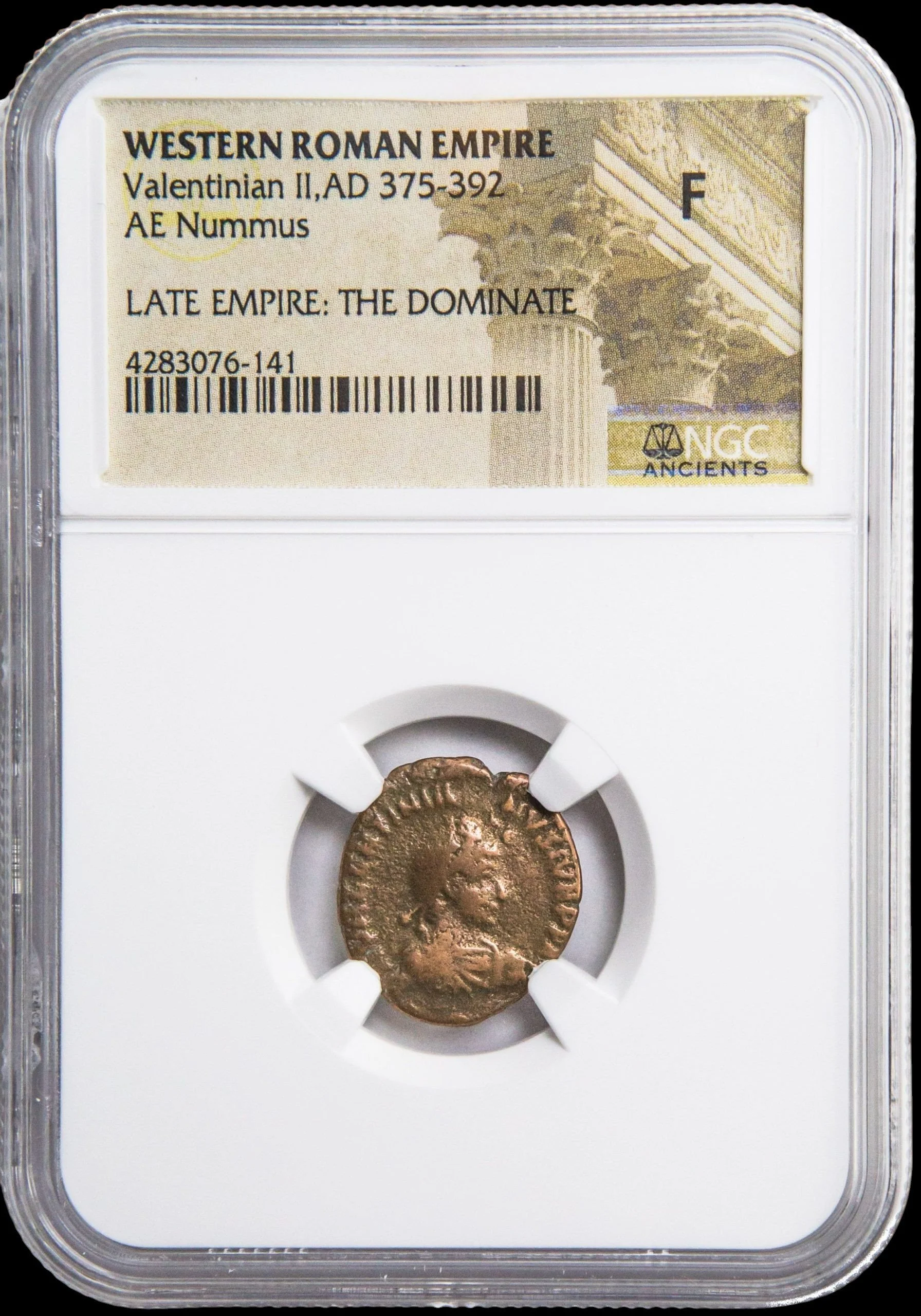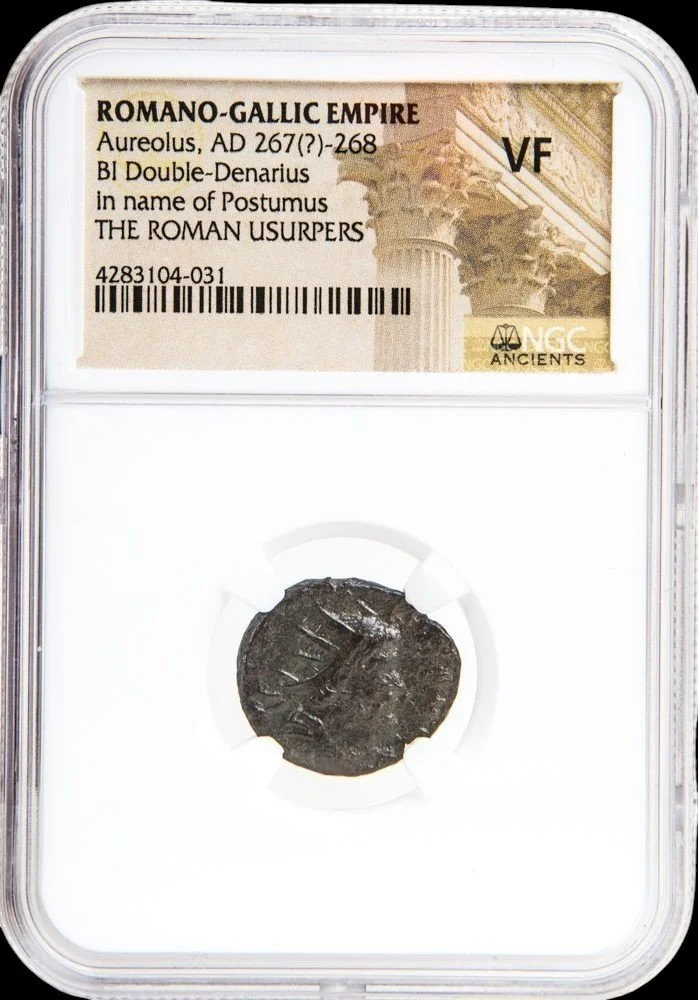 Image 1 of 4
Image 1 of 4

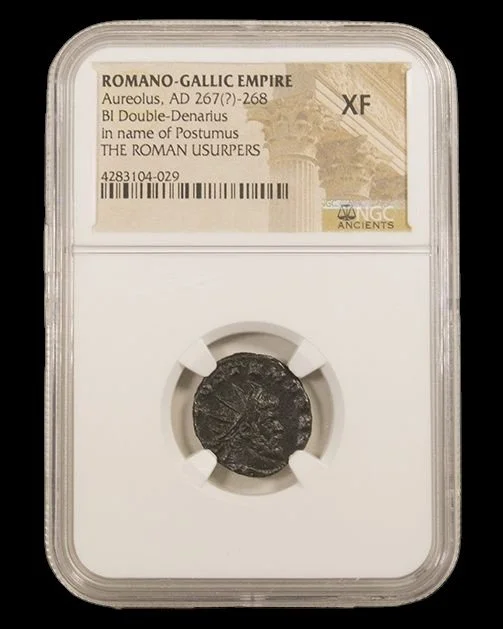 Image 2 of 4
Image 2 of 4

 Image 3 of 4
Image 3 of 4

 Image 4 of 4
Image 4 of 4





Aureolus Roman AE (Issued In The Name Of Postumus) (about 1,755 years ago)
The coins shown are representative examples of the grade and type, but not the actual specimens for sale. For details on NGC’s grading standards and definitions, please refer to our NGC Grading page.
This bronze coin was issued by the Roman general Aureolus during his brief rebellion against Emperor Gallienus in 268 CE. Interestingly, instead of minting coins in his own name, Aureolus produced coins in the name of Postumus, the ruler of the breakaway Gallic Empire, indicating their political alliance against the central Roman authority.
Coin Description:
Front side: Portrait of Postumus (not Aureolus) wearing a radiate crown, with Latin inscriptions identifying him as emperor
Back side: Likely features typical Roman imagery such as deities, personifications, or military themes common on Postumus' coinage
Technical Details:
Bronze composition (copper alloy)
AE denomination (bronze coinage)
NGC certified (Numismatic Guaranty Corporation)
Minted in 268 CE during Aureolus' brief rebellion
Condition: Certified by NGC, specific grade not provided
Historical Significance: This coin illustrates the complex political fragmentation of the Roman Empire during the Crisis of the Third Century. General Aureolus, commander of Emperor Gallienus' cavalry, rebelled in 268 CE and allied himself with Postumus, ruler of the breakaway Gallic Empire. By minting coins in Postumus' name rather than his own, Aureolus demonstrated his recognition of the Gallic ruler's authority. His rebellion was short-lived, however, as he was defeated and executed in Milan by forces loyal to Claudius II Gothicus, who succeeded Gallienus after his assassination. These coins provide numismatic evidence of the shifting political alliances during this chaotic period.
The coins shown are representative examples of the grade and type, but not the actual specimens for sale. For details on NGC’s grading standards and definitions, please refer to our NGC Grading page.
This bronze coin was issued by the Roman general Aureolus during his brief rebellion against Emperor Gallienus in 268 CE. Interestingly, instead of minting coins in his own name, Aureolus produced coins in the name of Postumus, the ruler of the breakaway Gallic Empire, indicating their political alliance against the central Roman authority.
Coin Description:
Front side: Portrait of Postumus (not Aureolus) wearing a radiate crown, with Latin inscriptions identifying him as emperor
Back side: Likely features typical Roman imagery such as deities, personifications, or military themes common on Postumus' coinage
Technical Details:
Bronze composition (copper alloy)
AE denomination (bronze coinage)
NGC certified (Numismatic Guaranty Corporation)
Minted in 268 CE during Aureolus' brief rebellion
Condition: Certified by NGC, specific grade not provided
Historical Significance: This coin illustrates the complex political fragmentation of the Roman Empire during the Crisis of the Third Century. General Aureolus, commander of Emperor Gallienus' cavalry, rebelled in 268 CE and allied himself with Postumus, ruler of the breakaway Gallic Empire. By minting coins in Postumus' name rather than his own, Aureolus demonstrated his recognition of the Gallic ruler's authority. His rebellion was short-lived, however, as he was defeated and executed in Milan by forces loyal to Claudius II Gothicus, who succeeded Gallienus after his assassination. These coins provide numismatic evidence of the shifting political alliances during this chaotic period.







